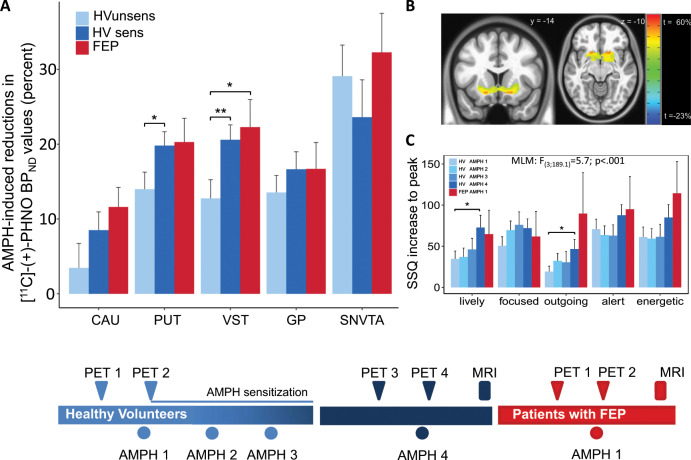Fig. 1. Amphetamine (AMPH)-induced dopamine (DA) release and subjective AMPH effects in healthy volunteers before and after AMPH-sensitization and in drug-free patients with first-episode psychosis (FEP).
Upper panel: a AMPH-induced DA release in five subdivisions of the basal ganglia (CAU Caudate, PUT Putamen, VST Ventral Striatum, GP Globus Pallidus, SNVTA substantia nigra/ventral-tegmental area) in healthy volunteers before (HVUNSENS; sky-blue) and after prospective sensitization to AMPH (HVSENS; deep-blue), and in antipsychotic-naïve patients FEP (red). Patients show larger AMPH-induced DA release than HVUNSENS. Prospective sensitization of HVUNSENS induced by repeated AMPH administration amplifies DA release, such that the AMPH response in HVSENS no longer differs from FEP. b Statistical parametric maps displaying brain areas with the largest sensitization-induced increases in DA-release. Peak effects (up to 60 percent increase) are found in VST (MNI coordinates x = −19, y = −16, z = −10). c Subjective AMPH effects in HV undergoing prospective sensitization to AMPH. Repeated administration (four times; light to deep-blue) of AMPH at low constant dose (0.3 mg/kg body weight) successfully induced sensitization as shown by the progressive increase in the AMPH response. Patients with FEP (red; one administration of AMPH) displayed marked AMPH effects already at first contact with the drug. SSQ Subjective States Questionnaire; MNI Montreal Neurologic Institute standard space; bars represent mean ± standard error of the mean; post-hoc two-tailed t-tests: *p < 0.05, **p < 0.01). Lower panel: Study flowchart.

